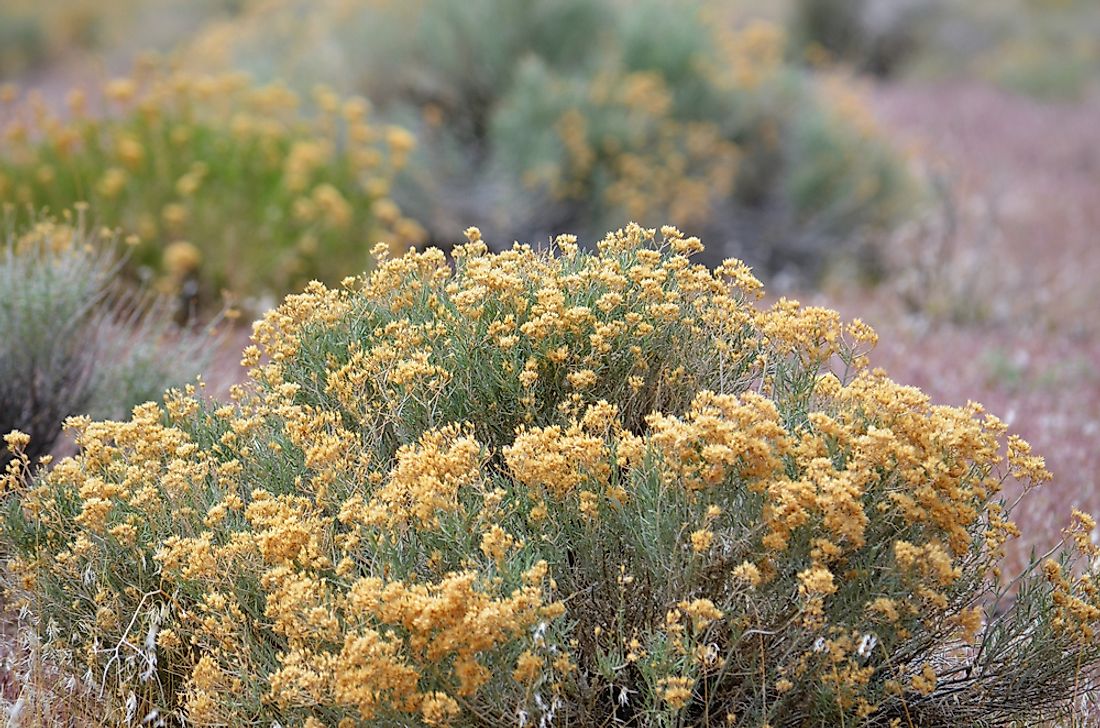What Is The State Flower of Nevada?

The official state flower of Nevada is the sagebrush (Artemisia tridentata). It was adopted in 1917. It is known as the black sagebrush, blue sagebrush, common sagebrush, or the big sagebrush. The sagebrush is a hardy, coarse, silvery green bush that grows in the deserts of southwest United States. The sagebrush has a pungent smell during the wet season. The Native Americans used it for medicinal purposes and weaving mats. The plant grows to between 3 and 6 feet but can reach 12 feet in wet areas and along riverbanks. In the late summer and early fall, the bushes produce small white and yellow flowers.
Characteristics Of The Sagebrush
The sagebrush has simple, alternate leaves that are persistent and drought resistant. The leaves are between 1/2 to 2 inches long, wedge-shaped, narrow, and pubescent. The flowers are monoecious, small, tubular, and yellowish. The fruits are four or five-sided while the twigs are slender, silvery-gray, and pubescent when young but turn grey-brown as they age. The bark is grayish brown, shreddy, and splits lengthwise.
Distribution
The sagebrush grows in the desert environments of North America from California to Canada in the north, east to Nebraska, and southwards to Mexico. The plants breathe life to the rugged deserts and provide cover for other plants and animals against the scorching sun. From late summer into fall, the flowers bloom turning the deserts yellow. During the winter, the sagebrush provides food for cattle and sheep. Is found within the limits of Las Vegas, Carson City, and Reno where it grows to a height of between 3 to 6 feet. In some areas of Nevada, the sagebrush slows down the famous cattle drives, as herders have to pick their way through dense bushes. Cowboys have also been forced to adapt chaps as daily wear to protect the legs from the plant and the animals that live within the bushes.
Threat To The Sagebrush
The sagebrush is a threatened species in Nevada. It is losing its natural environment to the ever-expanding ranches and intense wildfires. The loss of the plant means the loss of other plants and the animals that depend on them for survival. As the climate grows warmer, rivers begin to dry, and rainfall becomes scarce, the continued existence of the sagebrush in the deserts of North America cannot be guaranteed.











